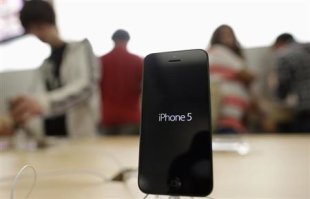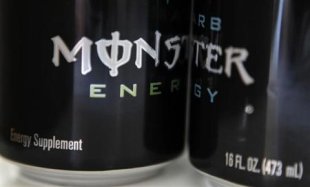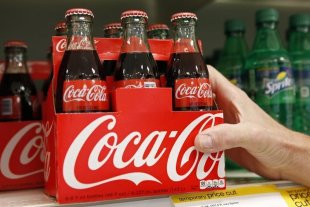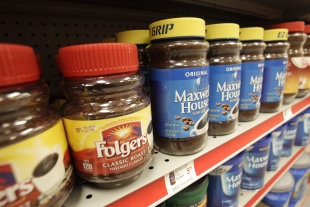Successful companies frequently rely heavily on just one product for the majority of their sales and profit. That’s true for some of the most iconic brands, including Coke, Marlboro and the Apple iPhone. Because each product represents such an outsized share of their respective company’s revenue, the products’ tremendous margins are the foundation of the company’s profit.
These products are the most profitable for several reasons. Nearly all of them are the market leader in their sector and are mass produced at an unprecedented scale. As a result, the companies can apply significant pressure up and down their supply chain, ensuring they can manufacture the product at the lowest cost, and sell it to customers at the highest possible price. Apple sold 37.4 million iPhones in its most recently reported quarter. Very few smartphone or consumer electronics devices can match that volume, which gives Apple notable leverage in negotiations for components and with carriers.
[More from 24/7 Wall St.: Worst Product Flops]
The most profitable products tend to rely on the power of their brand, which can command a premium price and sell extraordinary numbers of units. In fact, some of these products, including the iPhone, Coke and Marlboro, are part of the world’s most valuable brands as measured by brand consultancies like Interbrand and BrandZ. All three companies are the market leader, despite the presence of competing products that sell for much less.
Another important factor that contributes to product profitability is good management. A company that spends too much on research and development, marketing, or management can smother a product’s margins. Of course, controlling expenses is a balancing act. A product that is not well marketed is a product that will probably not do well for long.
Product profitability is among the most difficult financial measurement to analyze from the financial information released by many of America’s public companies. It is also among the most difficult to find information on. Public companies tend to guard data on product profits, and rightly so. This information is the equivalent of a trade secret that corporations do not want their competitors to have, even if the figures can be estimated.
[More from 24/7 Wall St.: Best and Worst-run states]
Based on data provided by Capital IQ, 24/7 Wall St. reviewed the S&P 500 companies that produce consumer products. We only considered corporations that have a single product save as the company’s flagship brand, or where the product represented the largest single contributor of revenue. To account for the opaque nature of product profitability, 24/7 Wall St. only considered products of publicly traded companies that disclosed significant details about their operations. And we used operating margin as the primary measure of profitability.
We excluded companies with an operating margin of less than 15%, as well as companies that did not break out revenue by division or product. In order to estimate product operating margin, in the cases when the product’s margin or revenue was not provided, we used the company or division’s operating margin as a proxy. (Operating margin measures a company's profit as a percent of revenue after deducting certain expenses. Companies with margins of less than 15% are less likely to have a product with a high product margin.)
If it was clear that the brand power of the product and high volume of sales allows the company to sell the product at a premium, we awarded the product a higher operating profit. Market share valued listed are worldwide, unless otherwise noted. We treated company products of the same type and brand as one. For example, for our purposes, Coca-Cola includes Coca-Cola, Diet Coke, and Cherry Coke.
1. iPhone
 REUTERS/Tony Gentile> Operating margin: 40%
REUTERS/Tony Gentile> Operating margin: 40%
> Revenue: $80.5 billion
> Market share: 20.9%
> Industry: Computer hardware
The iPhone is by far the most successful product Apple sells. Of the company’s $156.5 billion in worldwide sales in 2012, $80.5 billion came from the iPhone alone. Apple sold more than 125 million units last year, a 73% increase from 2011. In contrast, Apple sold 58.3 million iPads that year, generating just $32.4 billion in gross revenue. Each iPhone is far more profitable than each iPad, the company’s second best-selling product. According to documents released as a result of the patent lawsuit between Apple and Samsung, Apple’s gross margins on the iPhone were between 49% and 58% from April 2010 to April 2012, nearly double that of the iPad. This is partly because of larger revenue due to carriers that subsidize the iPhone heavily — an average of $425 per unit according to a recent Stifel Nicholaus analysis. Because of this fact, we calculate the iPhone’s profit margin is 40% — even higher than the entire company’s 35.3% margin.
2. Marlboro
 AP Photo/Paul Sakuma> Operating margin: 30%
AP Photo/Paul Sakuma> Operating margin: 30%
> Revenue: $19.0 billion
> Market share: 42.6%
> Industry: Tobacco
Marlboro cigarettes are sold by Altria Group, Inc. in the U.S., and by Philip Morris International — which Altria spun off roughly five years ago — outside the U.S. Marlboro branded cigarettes have made both companies extremely profitable. Altria’s sales of smokeable products totalled roughly $22.8 billion in its most recent full year, 90% of total company revenues, of which 85% of units sold were Marlboros. Altria’s smokeable products unit has an operating profit of 28%. Because Marlboro is one the company’s strongest and best-selling brand, it is 24/7’s estimate that costs to produce the cigarette are lower and average price charged is higher than the company’s discount cigarette lines. As a result, we estimate the cigarette has an operating margin of at least 30%. BrandZ calculates that Marlboro is the world’s seventh most valuable brand at $73.6 billion.
[More from 24/7 Wall St.: Countries with the highest unemployment]
3. Monster
 REUTERS/Sam Mircovich> Operating margin: 26.7%
REUTERS/Sam Mircovich> Operating margin: 26.7%
> Revenue: $1.9 billion
> Market share: 37.2%
> Industry: Soft drinks
Monster Beverage Corporation had net sales of roughly $2.1 billion in fiscal 2012, with an operating income of $551 million. According to market research company Symphony IRI, in the 52 weeks ending February 24, Monster-branded energy drinks accounted for 37.2% of the market, just behind main competitor Red Bull. In that time, the company sold approximately 1.2 billion cans of its Monster-branded products, including almost 776 million cans of its original Monster beverage. Because Monster-branded drinks accounted for 92.3% of total company revenue, we have treated the company’s 26.7% operating margin as a proxy for the energy beverage. Monster, like many energy drink vendors, has faced controversy in recent months after the Food and Drug Administration released reports of several deaths that may have been associated with the product.
4. Coca-Cola
 REUTERS/Kevin Lamarque> Operating margin: 25%
REUTERS/Kevin Lamarque> Operating margin: 25%
> Revenue: $14.3 billion
> Market share: 41.9%
> Industry: Soft drinks
Coca-Cola and Diet Coke were the two most popular sodas in the world as of 2011, with Diet Coke recently surpassing Pepsi to become the second-most popular drink in the U.S. Overall, trademark Coca-Cola products accounted for approximately 48% of all case sales of finished finished products, the company sold in fiscal 2012. Given that the company’s finished products unit, which includes the Coca-Cola brand, accounted for 62% of total revenue for the company, Coca-Cola trademark drinks accounted for roughly 30% of the company’s total revenue. Overall, the Coca-Cola Company reported 2012 sales of $48 billion and an operating profit of 22.4%. We estimate that the tremendous sales of the company’s flagship brand pushes its operating margin to 25%. BrandZ reports that Coke is the world’s sixth most valuable brand at $74.3 billion.
5. Enfamil
 AP Photo/Mark Lennihan> Operating margin: 24%
AP Photo/Mark Lennihan> Operating margin: 24%
> Revenue: $2.3 billion
> Market share: 15.1%
> Industry: Packaged foods and meats
The Mead Johnson Nutrition Company primarily sells infant formula and nutritional products for children, with infant formula making up 59% of the company’s total sales in 2012. The vast majority of Mead’s infant formula sales are from Enfamil, one of the best-selling infant formula brands in the U.S. The product also has several versions designed for babies with different types of feeding problems, intolerances and nutritional needs. There is also no major category in the infant formula industry in which the brand doesn’t have a presence. According to Crain’s Chicago Business, Mead Johnson had the second largest market share in infant formula as of mid-2012, with 15.1% of the market. The company was also the market leader in the rapidly growing Chinese formula market as of last year. The company’s operating margin in FY 2012 was 22.3%.We estimate its top brand has a margin of at least 24% as a result of higher retail prices earned by its strong brand and lower costs to produce due to production economies.
6. Folgers
 AP Photo> Operating margin: 23.6%
AP Photo> Operating margin: 23.6%
> Revenue: $2.3 billion
> Market share: 11.8% (U.S.)
> Industry: Packaged foods and meats
Folgers is owned by the J.M. Smucker Company, which reported sales of $5.5 billion in 2012. Of those sales, $2.3 billion came from coffee. (p.28) The company’s U.S. retail coffee unit, of which Folger’s is the top-selling brand, reported an operating margin of 23.6%, which is down from 27.8% in 2011 and 28.5% in 2010. We estimate that Folgers has an operating margin of at least that. The brand is the market leader for instant coffee in the U.S., commanding an 11.8% market share as of 2012. However, this is down from 13.2% in 2011. J.M. Smucker cut the price of coffee by 6% in 2012, which will affect the bottom line for both its Folgers brand and Dunkin’ Donuts-licensed coffee. One of the reasons the company’s profitability is so impressive is that it exists in a highly competitive market with brands like Maxwell House and Starbucks.
7. Garmin nüvi
 ConsumerReports.org> Operating margin: 15%
ConsumerReports.org> Operating margin: 15%
> Revenue: $1.2 billion
> Market share: Greater than 50%
> Industry: Consumer electronics
Garmin is a navigation device company, focusing on GPS technology. By far, the most profitable of the company’s five divisions on a dollar basis, despite the fact that other divisions of the company have better margins, is the automotive/mobile group. This division makes and sells Garmin’s GPS units. This segment accounted for 55% of the company’s sales in 2012 — $221 million in operating profit on $1.5 billion in revenue. By comparison, none of the other four segments accounted for more than 15% of sales. Much of the segment’s success was due to Garmin’s nüvi product line, which accounted for 43% of the company’s total revenue in 2012. Garmin is by far the largest participant in the GPS market, with over a 50% market share, according to Consumer Reports.
These products are the most profitable for several reasons. Nearly all of them are the market leader in their sector and are mass produced at an unprecedented scale. As a result, the companies can apply significant pressure up and down their supply chain, ensuring they can manufacture the product at the lowest cost, and sell it to customers at the highest possible price. Apple sold 37.4 million iPhones in its most recently reported quarter. Very few smartphone or consumer electronics devices can match that volume, which gives Apple notable leverage in negotiations for components and with carriers.
[More from 24/7 Wall St.: Worst Product Flops]
The most profitable products tend to rely on the power of their brand, which can command a premium price and sell extraordinary numbers of units. In fact, some of these products, including the iPhone, Coke and Marlboro, are part of the world’s most valuable brands as measured by brand consultancies like Interbrand and BrandZ. All three companies are the market leader, despite the presence of competing products that sell for much less.
Another important factor that contributes to product profitability is good management. A company that spends too much on research and development, marketing, or management can smother a product’s margins. Of course, controlling expenses is a balancing act. A product that is not well marketed is a product that will probably not do well for long.
Product profitability is among the most difficult financial measurement to analyze from the financial information released by many of America’s public companies. It is also among the most difficult to find information on. Public companies tend to guard data on product profits, and rightly so. This information is the equivalent of a trade secret that corporations do not want their competitors to have, even if the figures can be estimated.
[More from 24/7 Wall St.: Best and Worst-run states]
Based on data provided by Capital IQ, 24/7 Wall St. reviewed the S&P 500 companies that produce consumer products. We only considered corporations that have a single product save as the company’s flagship brand, or where the product represented the largest single contributor of revenue. To account for the opaque nature of product profitability, 24/7 Wall St. only considered products of publicly traded companies that disclosed significant details about their operations. And we used operating margin as the primary measure of profitability.
We excluded companies with an operating margin of less than 15%, as well as companies that did not break out revenue by division or product. In order to estimate product operating margin, in the cases when the product’s margin or revenue was not provided, we used the company or division’s operating margin as a proxy. (Operating margin measures a company's profit as a percent of revenue after deducting certain expenses. Companies with margins of less than 15% are less likely to have a product with a high product margin.)
If it was clear that the brand power of the product and high volume of sales allows the company to sell the product at a premium, we awarded the product a higher operating profit. Market share valued listed are worldwide, unless otherwise noted. We treated company products of the same type and brand as one. For example, for our purposes, Coca-Cola includes Coca-Cola, Diet Coke, and Cherry Coke.
1. iPhone
 REUTERS/Tony Gentile> Operating margin: 40%
REUTERS/Tony Gentile> Operating margin: 40%> Revenue: $80.5 billion
> Market share: 20.9%
> Industry: Computer hardware
The iPhone is by far the most successful product Apple sells. Of the company’s $156.5 billion in worldwide sales in 2012, $80.5 billion came from the iPhone alone. Apple sold more than 125 million units last year, a 73% increase from 2011. In contrast, Apple sold 58.3 million iPads that year, generating just $32.4 billion in gross revenue. Each iPhone is far more profitable than each iPad, the company’s second best-selling product. According to documents released as a result of the patent lawsuit between Apple and Samsung, Apple’s gross margins on the iPhone were between 49% and 58% from April 2010 to April 2012, nearly double that of the iPad. This is partly because of larger revenue due to carriers that subsidize the iPhone heavily — an average of $425 per unit according to a recent Stifel Nicholaus analysis. Because of this fact, we calculate the iPhone’s profit margin is 40% — even higher than the entire company’s 35.3% margin.
2. Marlboro
 AP Photo/Paul Sakuma> Operating margin: 30%
AP Photo/Paul Sakuma> Operating margin: 30%> Revenue: $19.0 billion
> Market share: 42.6%
> Industry: Tobacco
Marlboro cigarettes are sold by Altria Group, Inc. in the U.S., and by Philip Morris International — which Altria spun off roughly five years ago — outside the U.S. Marlboro branded cigarettes have made both companies extremely profitable. Altria’s sales of smokeable products totalled roughly $22.8 billion in its most recent full year, 90% of total company revenues, of which 85% of units sold were Marlboros. Altria’s smokeable products unit has an operating profit of 28%. Because Marlboro is one the company’s strongest and best-selling brand, it is 24/7’s estimate that costs to produce the cigarette are lower and average price charged is higher than the company’s discount cigarette lines. As a result, we estimate the cigarette has an operating margin of at least 30%. BrandZ calculates that Marlboro is the world’s seventh most valuable brand at $73.6 billion.
[More from 24/7 Wall St.: Countries with the highest unemployment]
3. Monster
 REUTERS/Sam Mircovich> Operating margin: 26.7%
REUTERS/Sam Mircovich> Operating margin: 26.7%> Revenue: $1.9 billion
> Market share: 37.2%
> Industry: Soft drinks
Monster Beverage Corporation had net sales of roughly $2.1 billion in fiscal 2012, with an operating income of $551 million. According to market research company Symphony IRI, in the 52 weeks ending February 24, Monster-branded energy drinks accounted for 37.2% of the market, just behind main competitor Red Bull. In that time, the company sold approximately 1.2 billion cans of its Monster-branded products, including almost 776 million cans of its original Monster beverage. Because Monster-branded drinks accounted for 92.3% of total company revenue, we have treated the company’s 26.7% operating margin as a proxy for the energy beverage. Monster, like many energy drink vendors, has faced controversy in recent months after the Food and Drug Administration released reports of several deaths that may have been associated with the product.
4. Coca-Cola
 REUTERS/Kevin Lamarque> Operating margin: 25%
REUTERS/Kevin Lamarque> Operating margin: 25%> Revenue: $14.3 billion
> Market share: 41.9%
> Industry: Soft drinks
Coca-Cola and Diet Coke were the two most popular sodas in the world as of 2011, with Diet Coke recently surpassing Pepsi to become the second-most popular drink in the U.S. Overall, trademark Coca-Cola products accounted for approximately 48% of all case sales of finished finished products, the company sold in fiscal 2012. Given that the company’s finished products unit, which includes the Coca-Cola brand, accounted for 62% of total revenue for the company, Coca-Cola trademark drinks accounted for roughly 30% of the company’s total revenue. Overall, the Coca-Cola Company reported 2012 sales of $48 billion and an operating profit of 22.4%. We estimate that the tremendous sales of the company’s flagship brand pushes its operating margin to 25%. BrandZ reports that Coke is the world’s sixth most valuable brand at $74.3 billion.
5. Enfamil
 AP Photo/Mark Lennihan> Operating margin: 24%
AP Photo/Mark Lennihan> Operating margin: 24%> Revenue: $2.3 billion
> Market share: 15.1%
> Industry: Packaged foods and meats
The Mead Johnson Nutrition Company primarily sells infant formula and nutritional products for children, with infant formula making up 59% of the company’s total sales in 2012. The vast majority of Mead’s infant formula sales are from Enfamil, one of the best-selling infant formula brands in the U.S. The product also has several versions designed for babies with different types of feeding problems, intolerances and nutritional needs. There is also no major category in the infant formula industry in which the brand doesn’t have a presence. According to Crain’s Chicago Business, Mead Johnson had the second largest market share in infant formula as of mid-2012, with 15.1% of the market. The company was also the market leader in the rapidly growing Chinese formula market as of last year. The company’s operating margin in FY 2012 was 22.3%.We estimate its top brand has a margin of at least 24% as a result of higher retail prices earned by its strong brand and lower costs to produce due to production economies.
6. Folgers
 AP Photo> Operating margin: 23.6%
AP Photo> Operating margin: 23.6%> Revenue: $2.3 billion
> Market share: 11.8% (U.S.)
> Industry: Packaged foods and meats
Folgers is owned by the J.M. Smucker Company, which reported sales of $5.5 billion in 2012. Of those sales, $2.3 billion came from coffee. (p.28) The company’s U.S. retail coffee unit, of which Folger’s is the top-selling brand, reported an operating margin of 23.6%, which is down from 27.8% in 2011 and 28.5% in 2010. We estimate that Folgers has an operating margin of at least that. The brand is the market leader for instant coffee in the U.S., commanding an 11.8% market share as of 2012. However, this is down from 13.2% in 2011. J.M. Smucker cut the price of coffee by 6% in 2012, which will affect the bottom line for both its Folgers brand and Dunkin’ Donuts-licensed coffee. One of the reasons the company’s profitability is so impressive is that it exists in a highly competitive market with brands like Maxwell House and Starbucks.
7. Garmin nüvi
 ConsumerReports.org> Operating margin: 15%
ConsumerReports.org> Operating margin: 15%> Revenue: $1.2 billion
> Market share: Greater than 50%
> Industry: Consumer electronics
Garmin is a navigation device company, focusing on GPS technology. By far, the most profitable of the company’s five divisions on a dollar basis, despite the fact that other divisions of the company have better margins, is the automotive/mobile group. This division makes and sells Garmin’s GPS units. This segment accounted for 55% of the company’s sales in 2012 — $221 million in operating profit on $1.5 billion in revenue. By comparison, none of the other four segments accounted for more than 15% of sales. Much of the segment’s success was due to Garmin’s nüvi product line, which accounted for 43% of the company’s total revenue in 2012. Garmin is by far the largest participant in the GPS market, with over a 50% market share, according to Consumer Reports.


